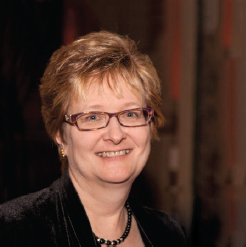
I hear what you’re saying. I catch your drift. How do you express understanding? Most of us have a preferred communication and learning style — visual, auditory, kinesthetic. Some literature includes a fourth style, reading/writing. To deliver a message more effectively, we often use multiple modes of communication — for instance, illustrating an oral presentation with PowerPoint slides.
I’m very much a visual person. If someone asks me “How does this sound?,” I’m likely to go over to their desk and look at their screen before rendering an opinion. I also have a strong preference for reading and writing (probably not surprising, since I am an editor), and I’m at my best when I can get a speaker’s slides in advance, print them out, and take notes directly on the slides.
AIChE’s Spring Meeting (April 10–14, Houston, TX; www.aiche.org/spring) offers numerous learning opportunities — technical presentations, poster sessions, keynote addresses, luncheons and other networking events, exhibitor displays, and more. So that I will be able to make the most of those opportunities, I thought this would be a good time to think about honing my listening skills. Here are a few of the tips I came across that go beyond the obvious advice to make eye contact, keep an open mind, don’t interrupt, give the speaker regular feedback (nod, smile, “uh-huh”), repeat or paraphrase what you heard, etc.
The most effective form of listening combines active listening with empathy. Empathic listening involves recognizing all verbal and nonverbal cues; understanding the meaning of the messages and keeping track of the points of the conversation; and assuring others that listening has occurred and encouraging communication to continue. We can demonstrate empathic listening with phrases such as: Thank you for sharing how you feel about this situation; You seem excited (upset, happy, etc.) about this issue, and I would like to hear more about your perspective; Here are what I think are your key points; Here are some suggested next steps — what do you think?; That’s a great point.
My preference for the visual prompted me to read the transcript of the TED Talk “10 Ways to Have a Better Conversation,” by Celeste Headlee, host of Georgia Public Broadcasting’s On Second Thought. (Later I did listen to it and watch it.) Headlee says, “There is no reason to learn how to show you’re paying attention if you are, in fact, paying attention.” Instead, she offers suggestions on how to interview people. She outlines ten basic rules (you can find all of them in her talk at www.ted.com/talks/celeste_headlee_10_ways_to_have_a_better_conversation#t-166782) and points out that mastering just one of them will enable you to enjoy better conversations. Here are four that you could start with:
- Don’t pontificate. If you want to state your opinion without any opportunity for response, argument, pushback, or growth, write a blog.
- Ask open-ended questions that start with who, what, when, where, why, orhow.
- Don’t equate your experience with theirs. You don’t need to prove how amazing you are.
- Stay out of the weeds. Most people don’t care about details like dates, names, places; omit them.
This month’s Young Professionals Point of View column (p. 24) deals with a different kind of interviewing. Editor Emily Frangenberg’s advice in “What to Ask During an Interview — And What Questions to Avoid” can help job-seekers have better conversations.

Copyright Permissions
Would you like to reuse content from CEP Magazine? It’s easy to request permission to reuse content. Simply click here to connect instantly to licensing services, where you can choose from a list of options regarding how you would like to reuse the desired content and complete the transaction.
